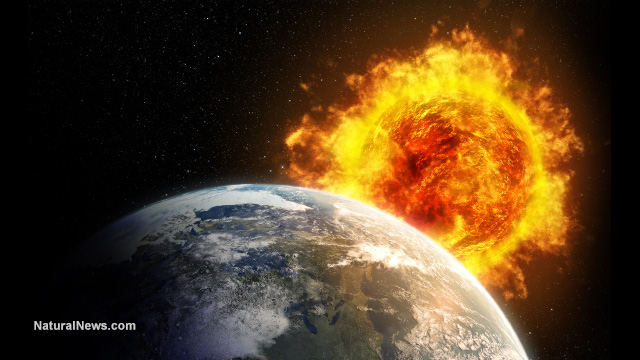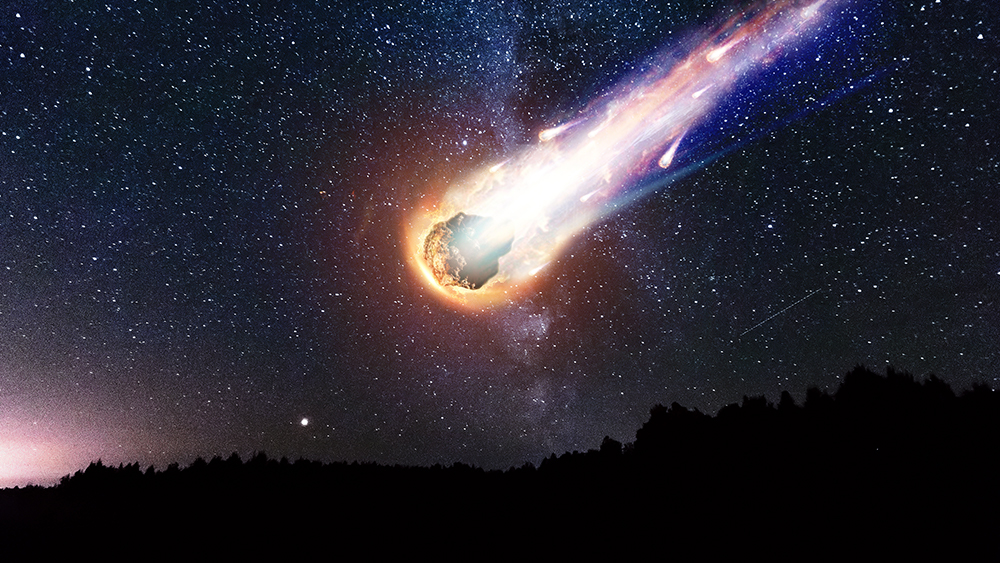Researchers find heartbeat-like radio bursts in sun's solar flare
By kevinhughes // 2023-03-02
Tweet
Share
Copy

A solar radio burst with a signal pattern similar to a human heartbeat was detected from a solar flare.
According to the international team of researchers that detected the signal, it came from within a C-class solar flare located more than 5,000 kilometers above the sun's surface. The researchers were able to determine the source of the signal after examining microwave observations of a solar flare event. The said event, which occurred on July 13, 2017, had been captured by the New Jersey Institute of Technology's (NJIT) Expanded Owens Valley Solar Array (EOVSA).
EOVSA usually observes the sun in a broad range of microwave frequencies over 1 to 18 gigahertz (GHz), and is sensitive to radio radiation sent by high-energy electrons in the sun's atmosphere – which is energized in solar flares.
Lead study author Yuankun Kou of Nanjing University (NJU) noted that the team discovered radio bursts displaying a signal pattern repeating every 10-20 seconds "like a heartbeat." (Related: Astronomers pick up radio signals from planets outside our solar system for the first time.)
Solar radio bursts are strong blasts of radio waves from the sun, which are often connected with solar flares and have been reported to display signals with repeating patterns. "The repeating patterns are not uncommon for solar radio bursts. But interestingly, there is a secondary source we did not expect," Kou said.
Discovery could help scientists in understanding solar flares
According to the study authors, their findings could assist their fellow scientists in understanding the physical processes behind the energy release of solar flares – the solar system's most powerful explosions. "The discovery is unexpected. This beating pattern is important for understanding how energy is released and is dissipated in the sun's atmosphere during these incredibly powerful explosions on the sun," said corresponding author and NJIT astronomer Sijie Yu. "However, the origin of these repetitive patterns – also called quasi-periodic pulsations (QPPs) – has long been a mystery and a source of debate among solar physicists." Yu posited that the signals likely originate from quasi-repetitive magnetic reconnections at the solar flare's current sheet. He added that the detection can help them determine which of the two sources caused the other one. Meanwhile, study co-author and NJU astronomy professor Xin Cheng remarked: "We wanted to know how the periodicity occurs in the current sheet. What is the physical process driving the periodicity and how is it related to the formation of the QPPs?" The team's investigation showed there are magnetic islands, or bubble-like structures that formed in the current sheet, quasi-periodically moving to the flaring region. According to Cheng, the appearance of magnetic islands within the long-stretched current sheet plays a key role in tweaking the energy release rate during an eruption. The quasi-periodic energy release process leads to a repeating production of high-energy electrons that manifest as QPPs in the microwave and soft X-ray wavelengths. Yu stated the findings of the study cast fresh light on an important phenomenon underlying the reconnection process that drives these explosive events. He ultimately remarked that their paper prompts a reexamination of the interpretations of earlier reported QPP events and their implications on solar flares. Follow Space.news for more news about the sun and solar flares. Watch this video that shows a solar flare event. This video is from the Alex Hammer channel on Brighteon.com.More related stories:
The sun unleashes strongest solar flare in three years. Strange unprecedented vortex spotted around the sun’s north pole. Astronomers detect mysterious radio signal coming from neighboring star. Sources include: ScienceDaily.com TechExplorist.com Brighteon.comTweet
Share
Copy
Tagged Under:
space research space exploration solar flares sun radio waves discoveries breakthrough weird science goodscience cosmic magnetic islands solar radio burst signal pattern quasi-periodic pulsations
You Might Also Like
Study finds IQ scores in the US have dropped for first time in nearly a century
By Arsenio Toledo // Share
Sen. Tom Cotton says China destroyed evidence about covid lab leak to bury “smoking gun”
By Ethan Huff // Share
Fauci “prompted” scientists to fabricate COVID-19’s natural origin in a paper
By Arsenio Toledo // Share
Recent News
False flags and the fight for truth: Jeffrey Prather's "Shadows of Deception"
By ramontomeydw // Share
Study confirms: Ultra-processed plant-based diets harm heart health
By patricklewis // Share
Off-grid communication: How to stay connected when the system fails
By dominguez // Share











